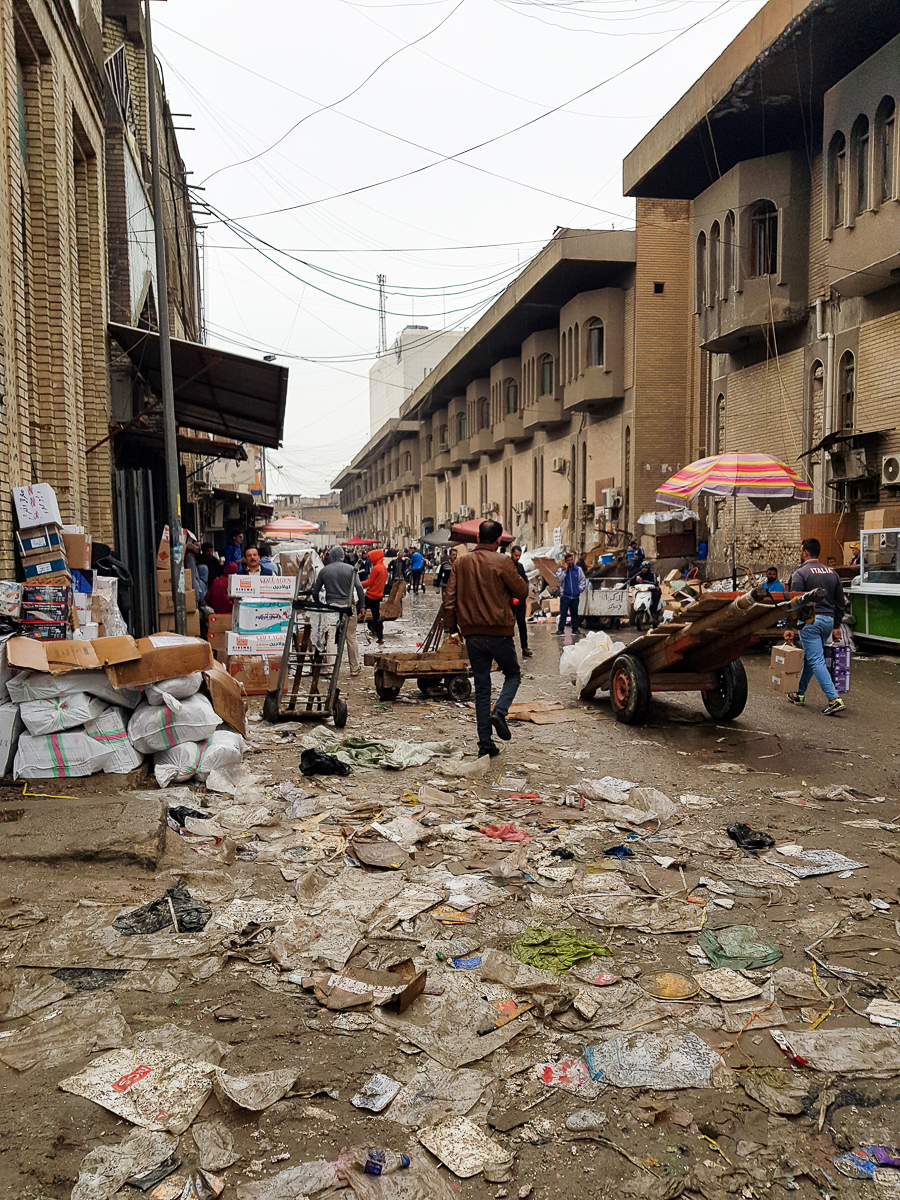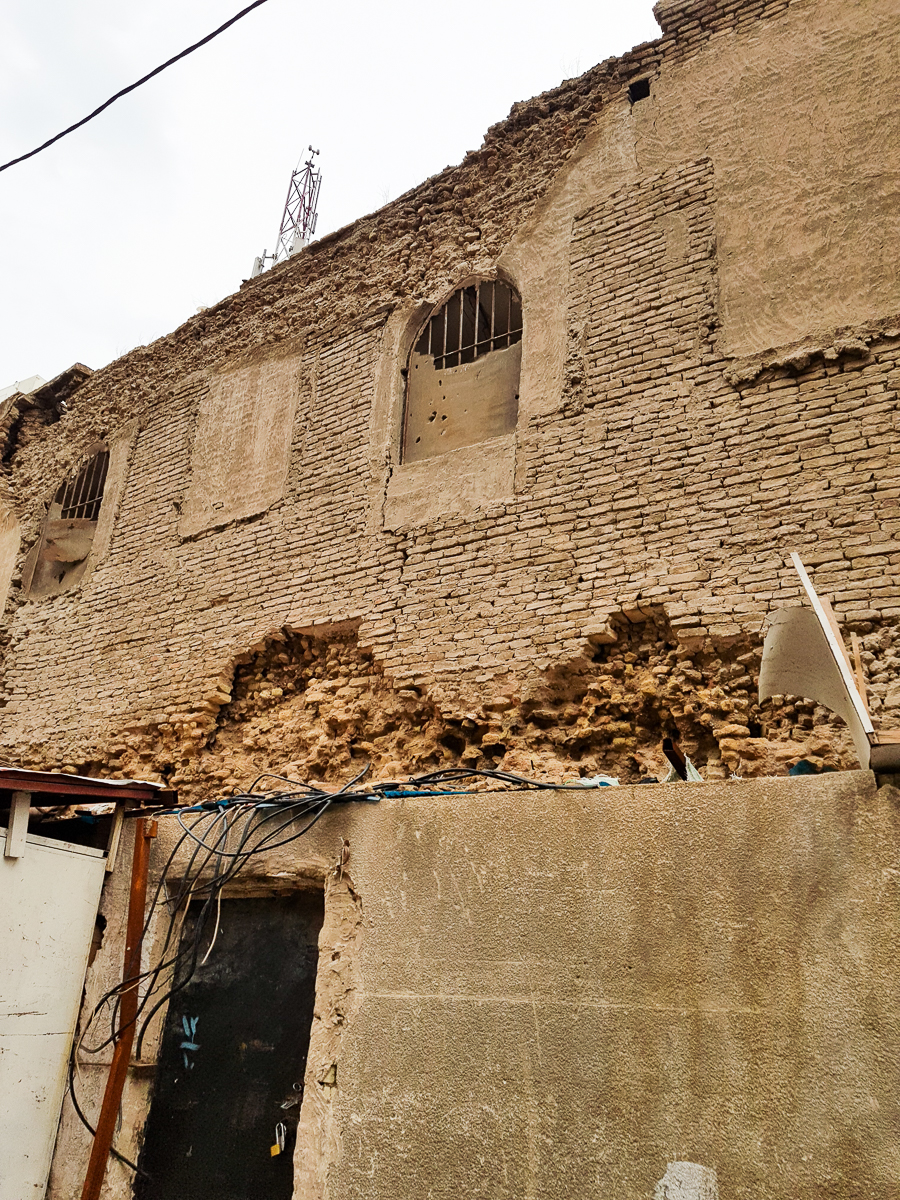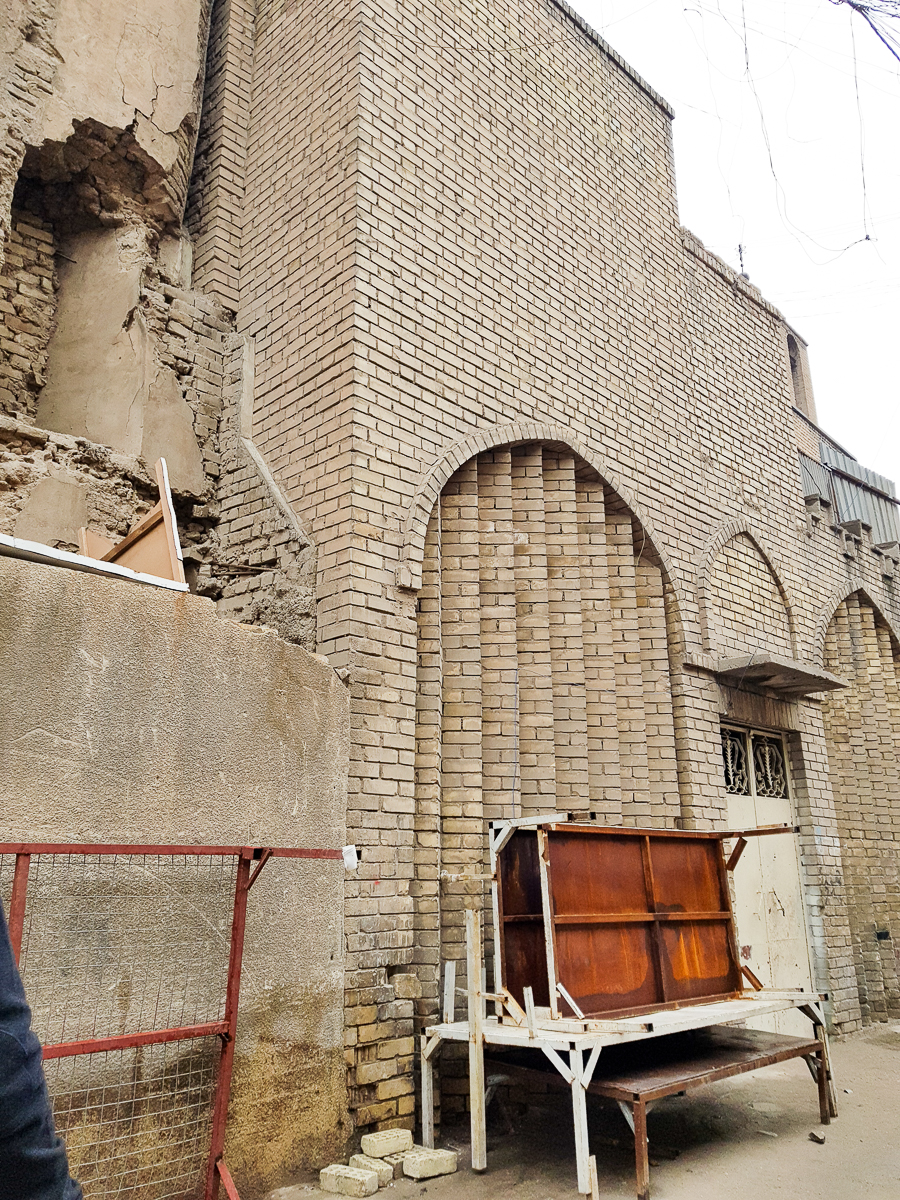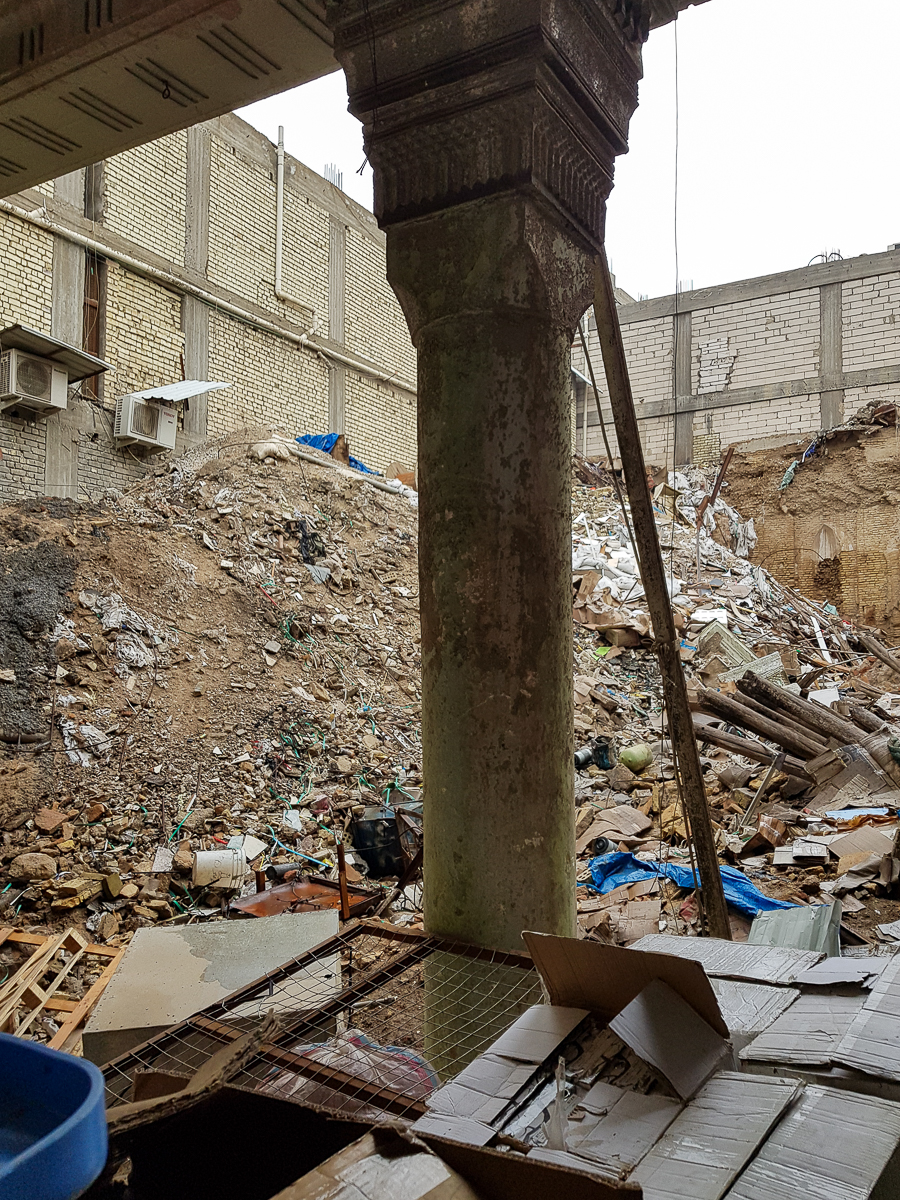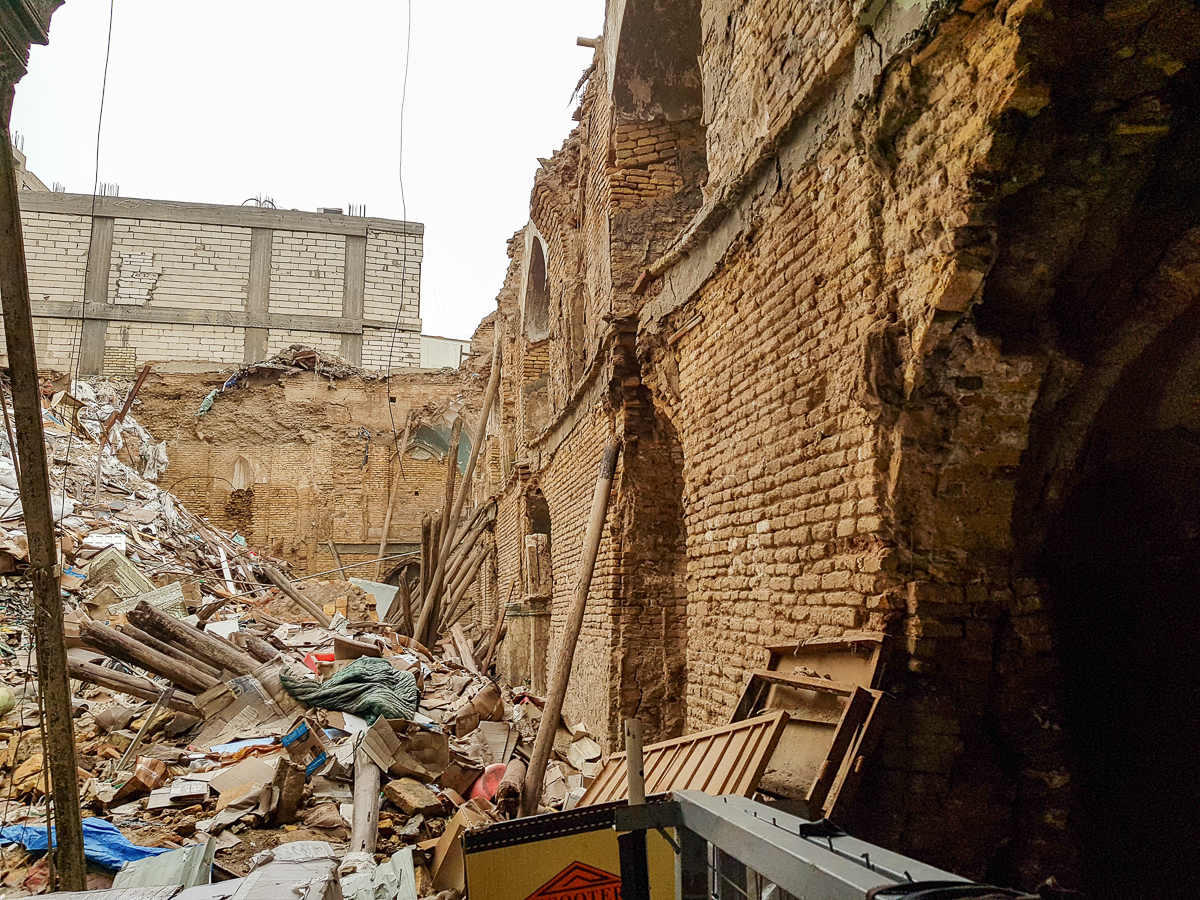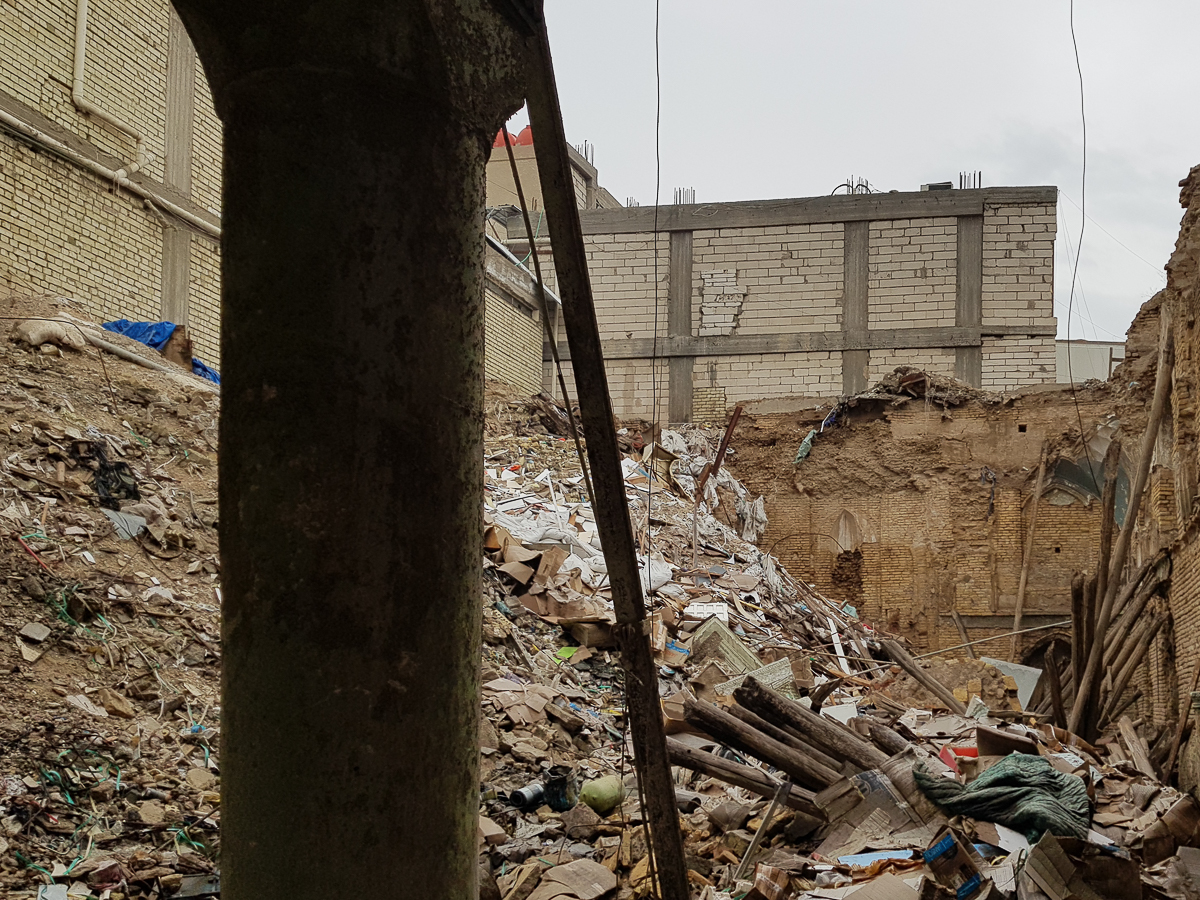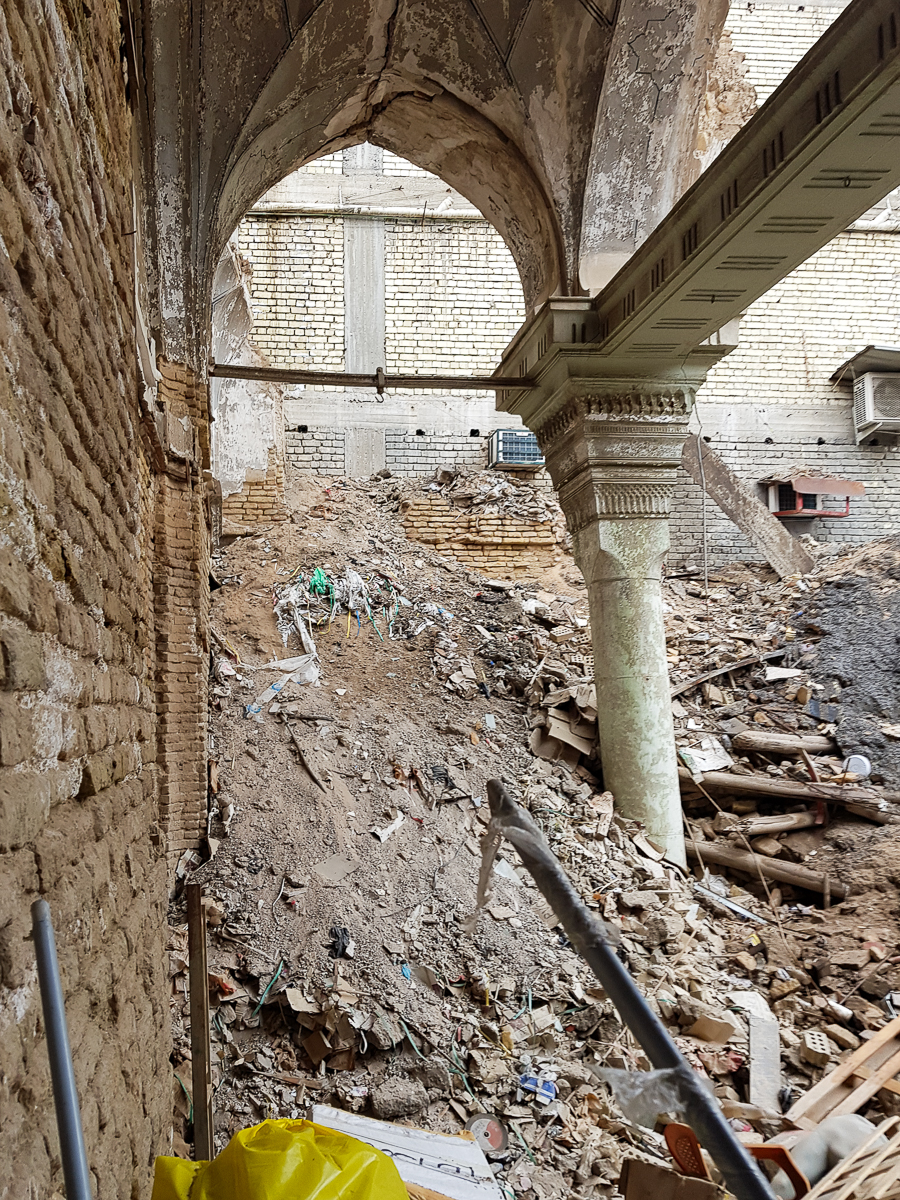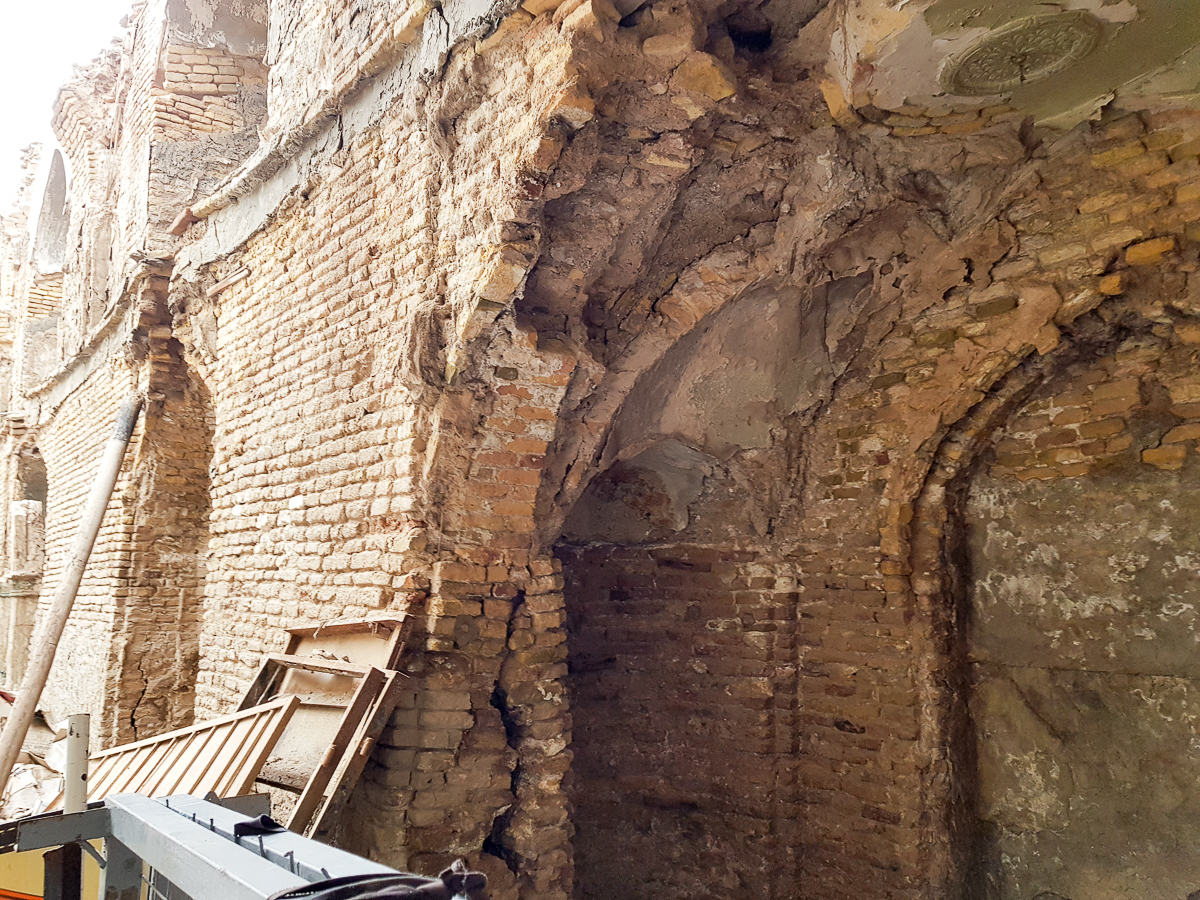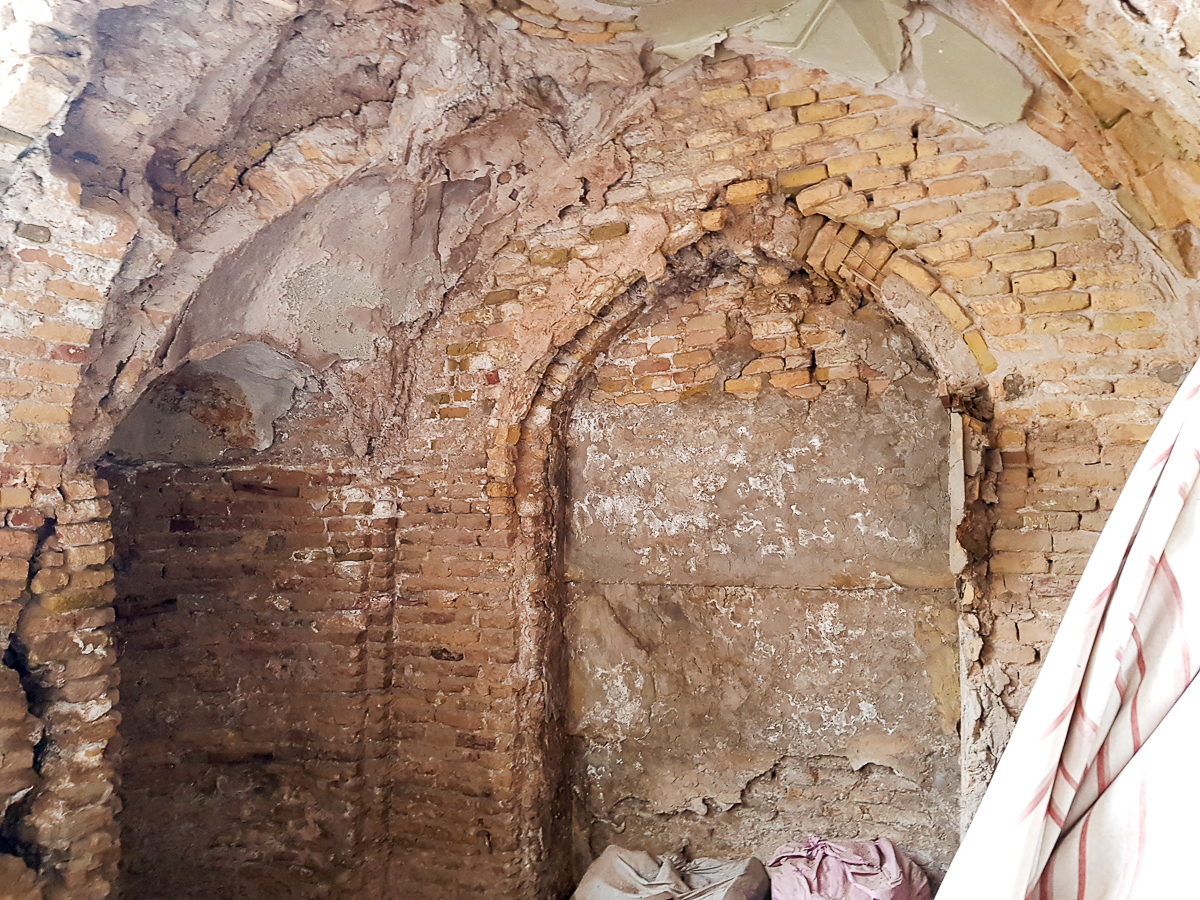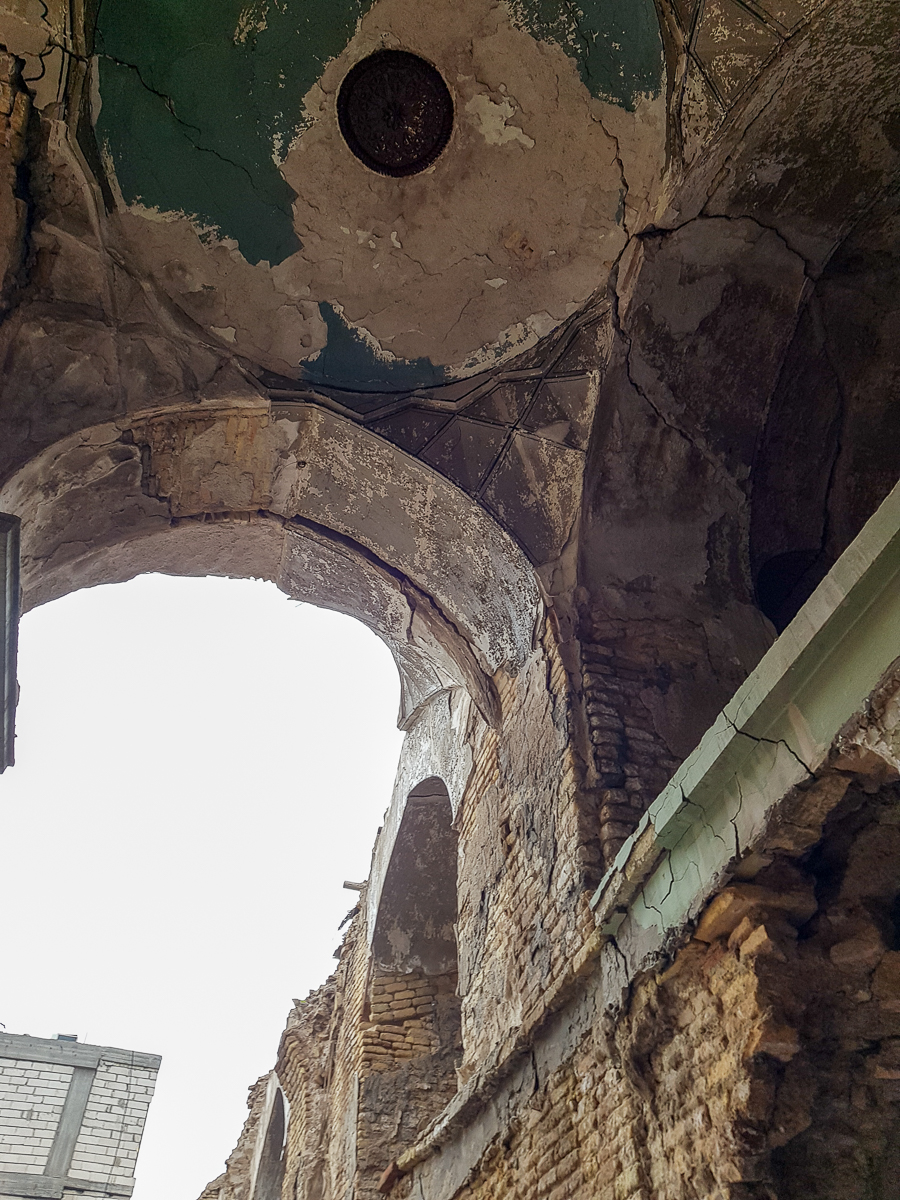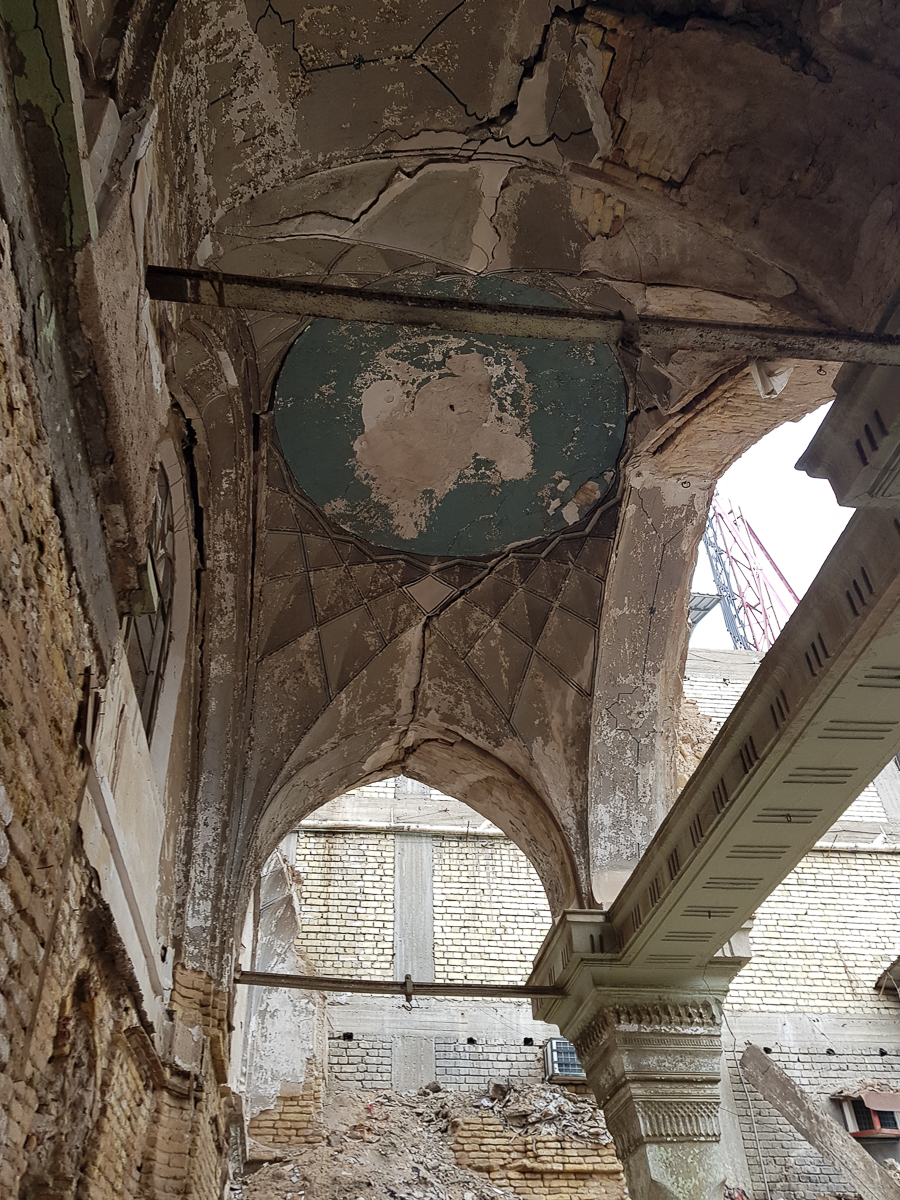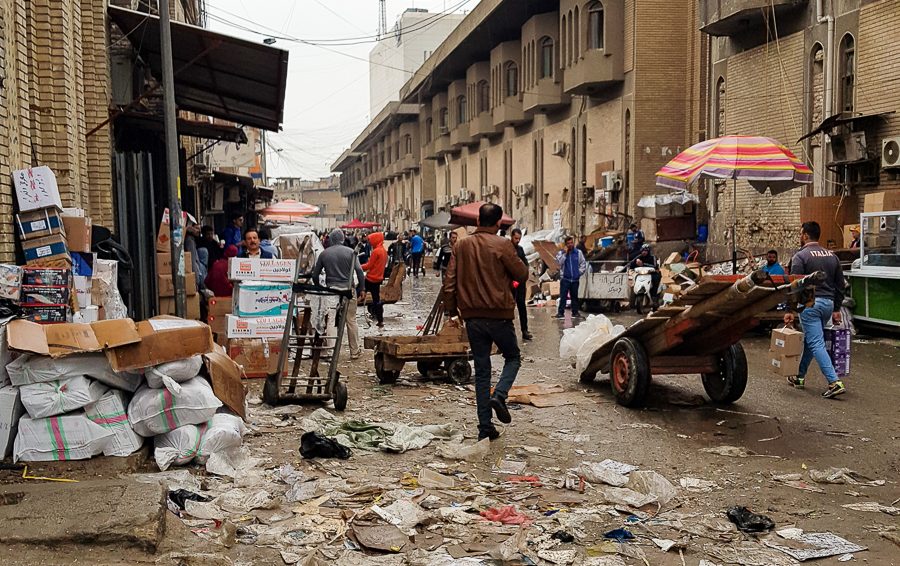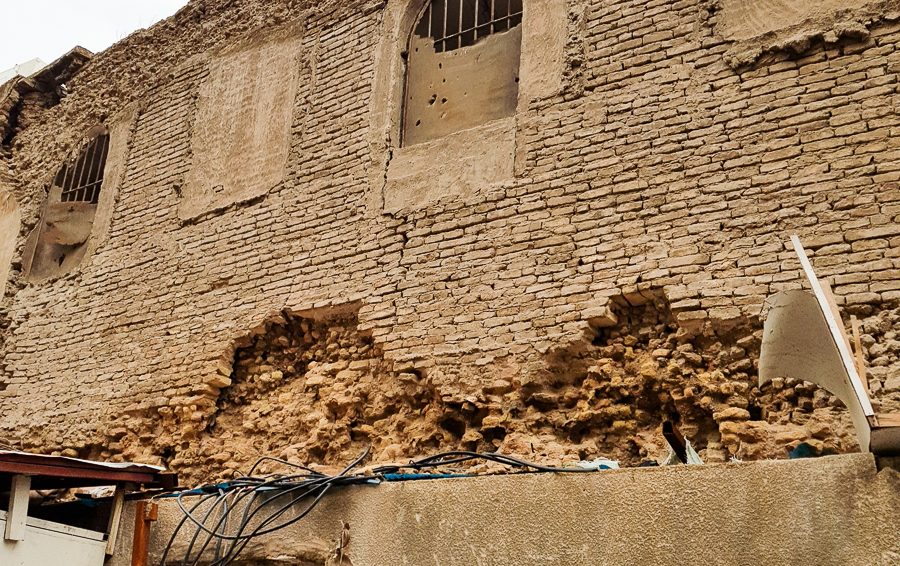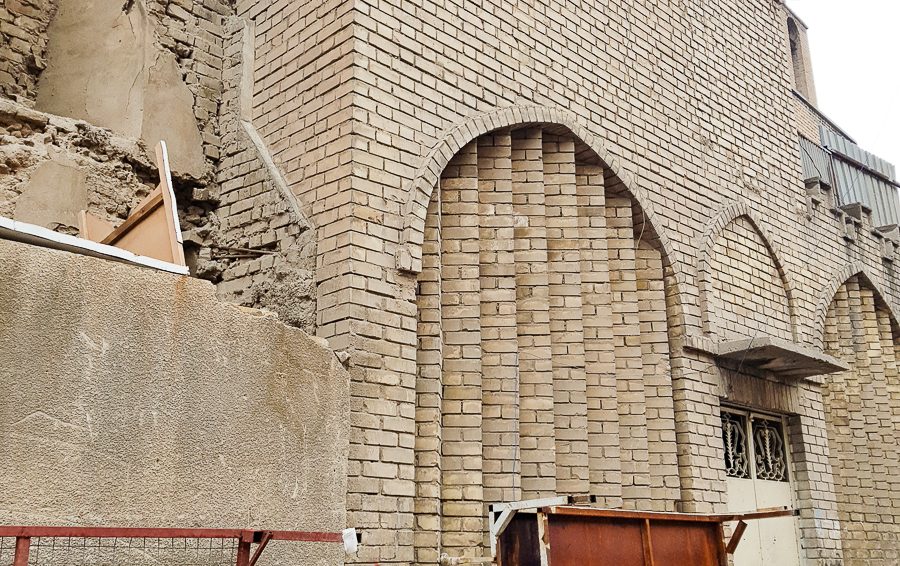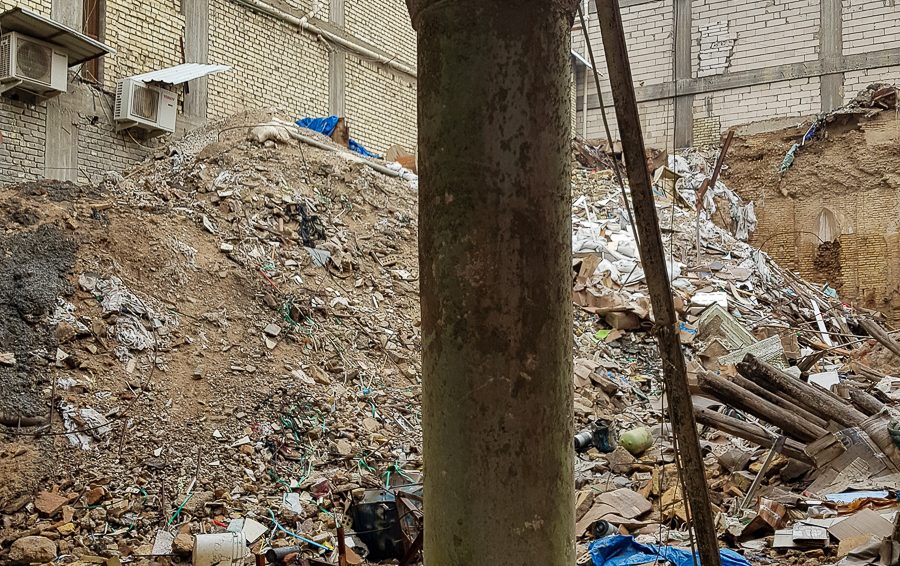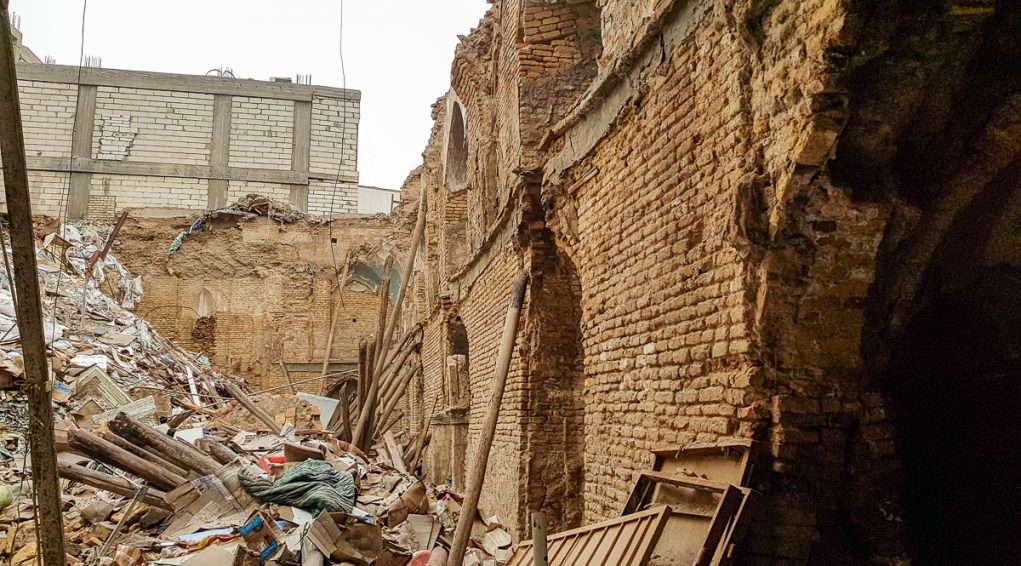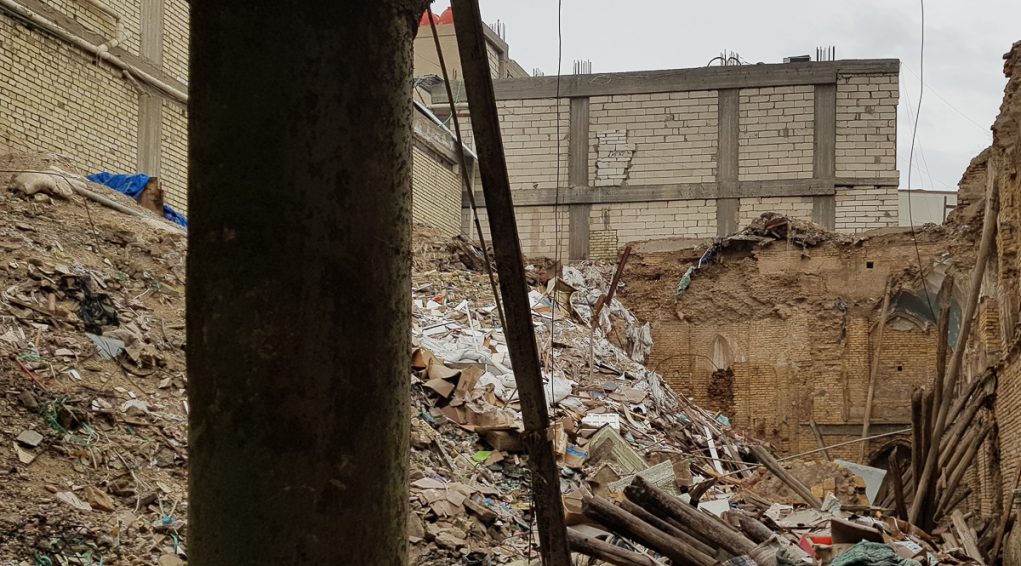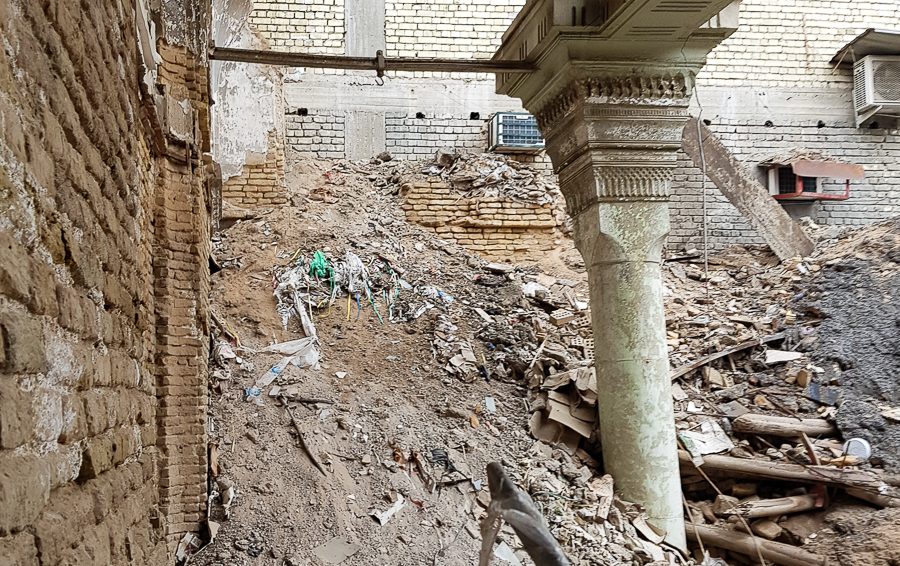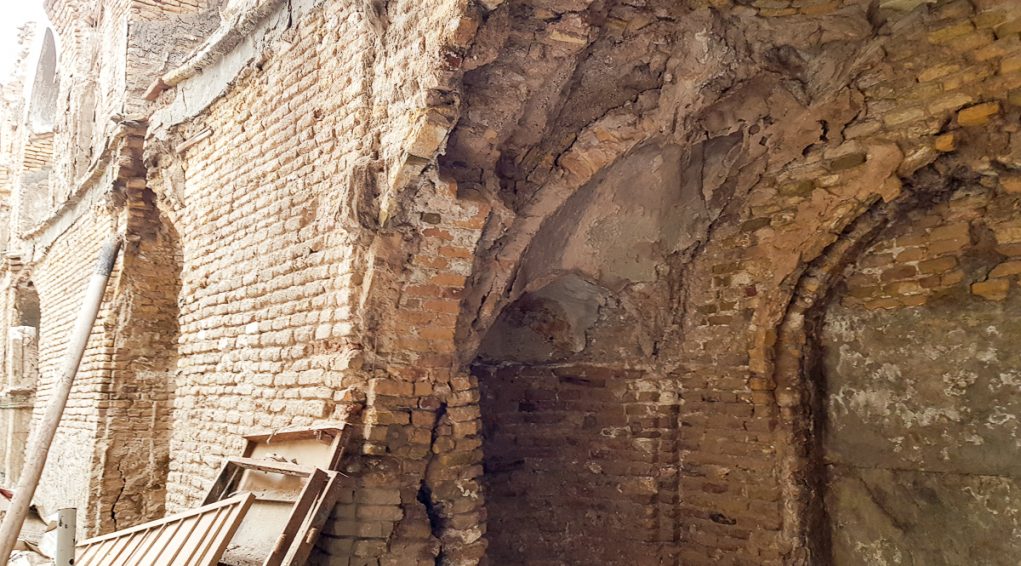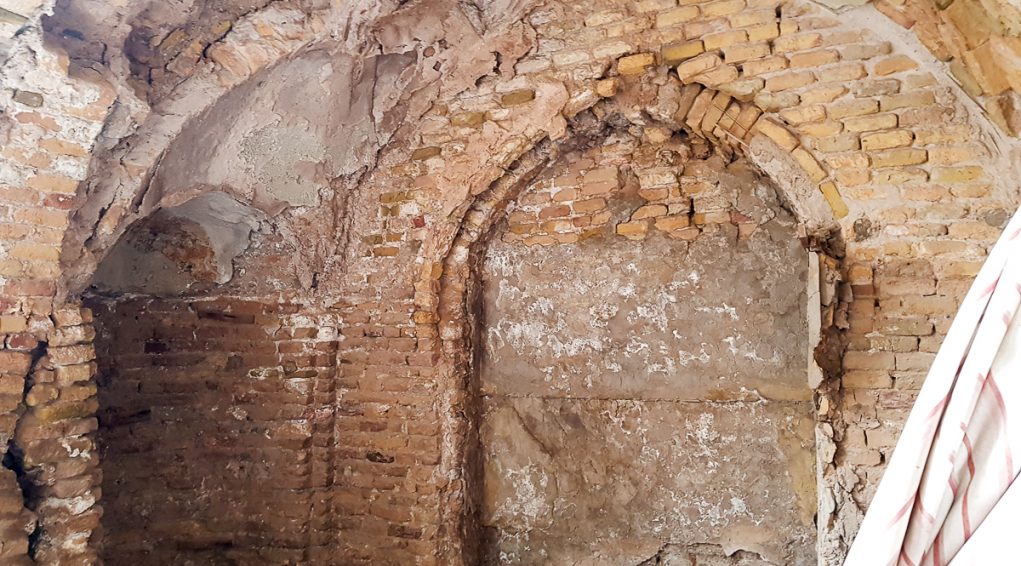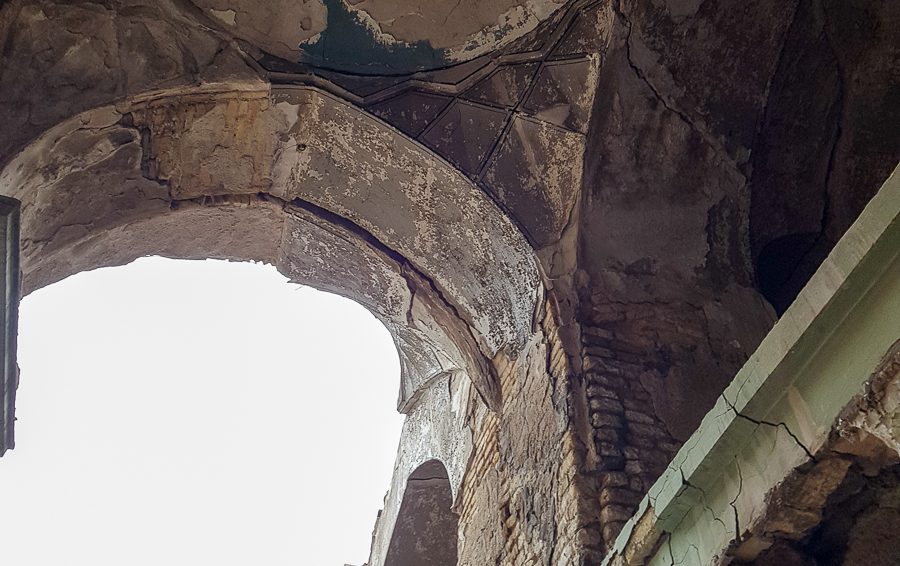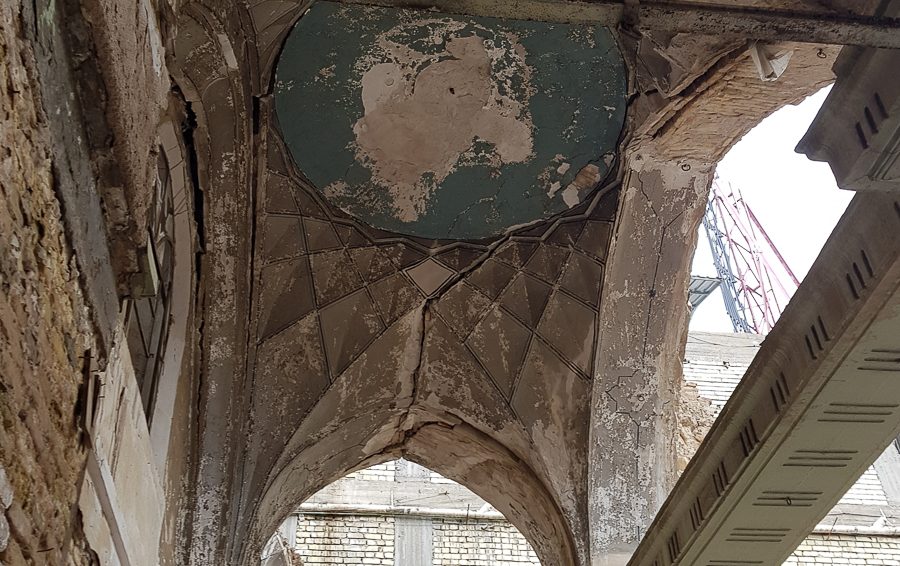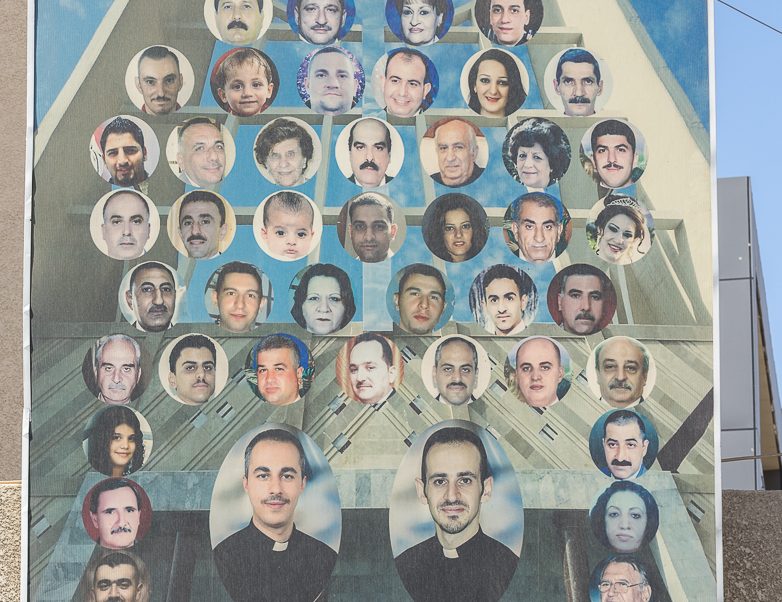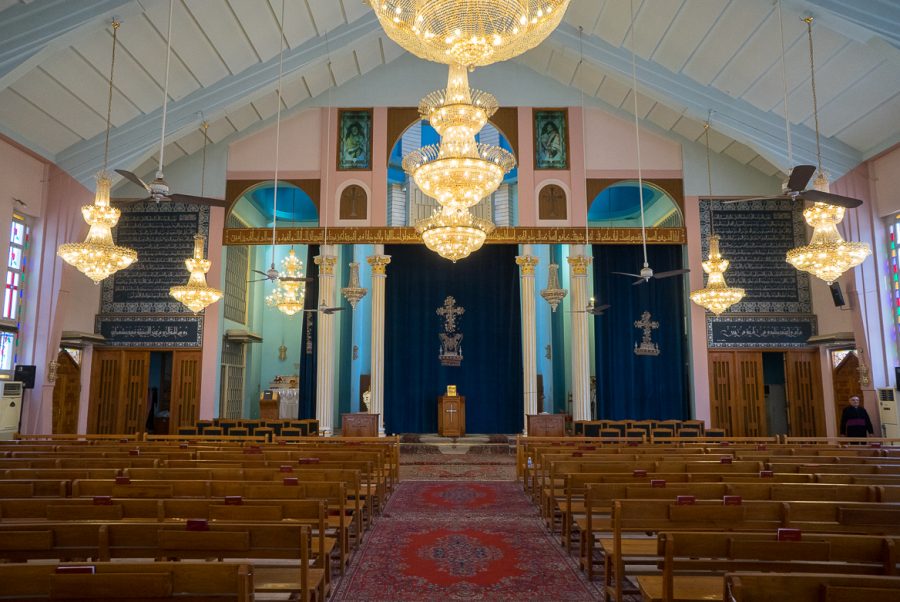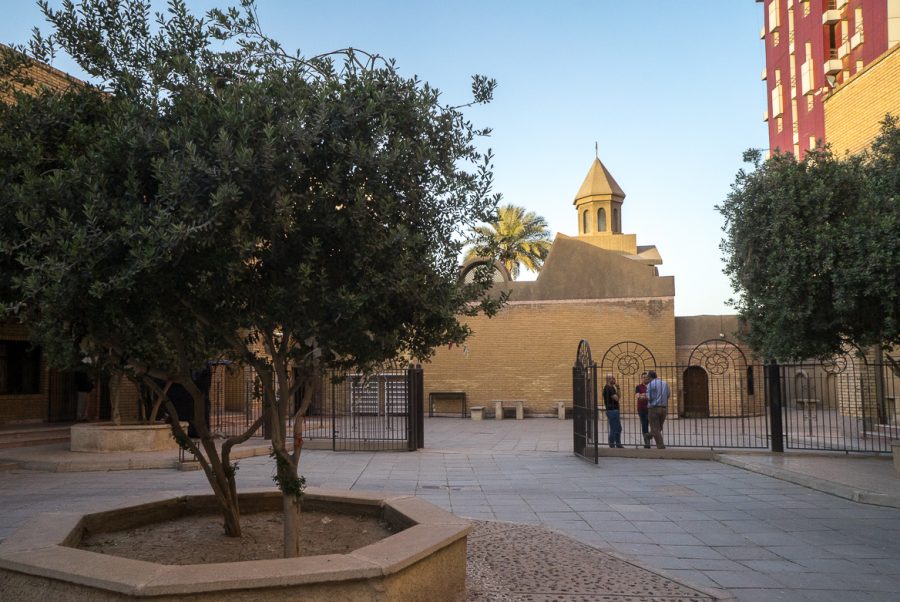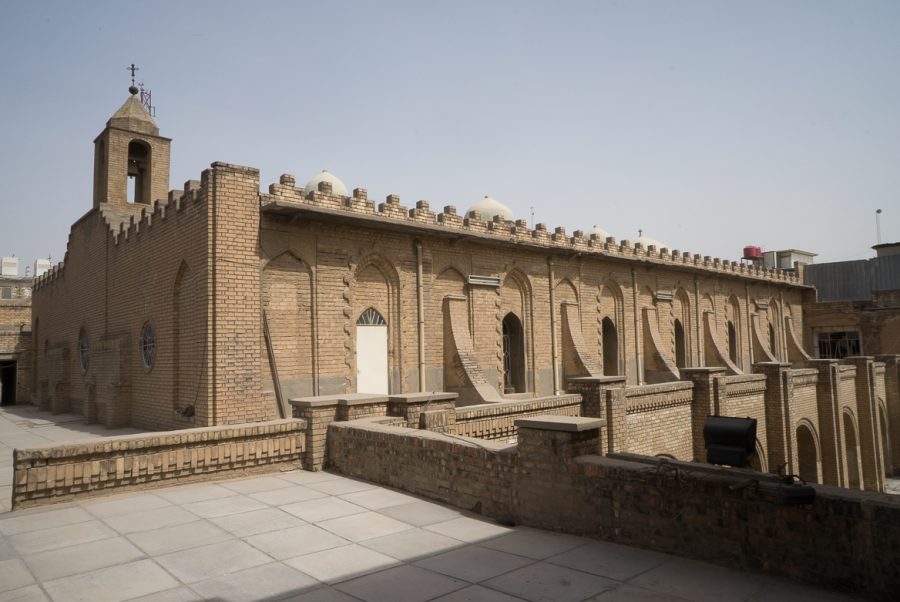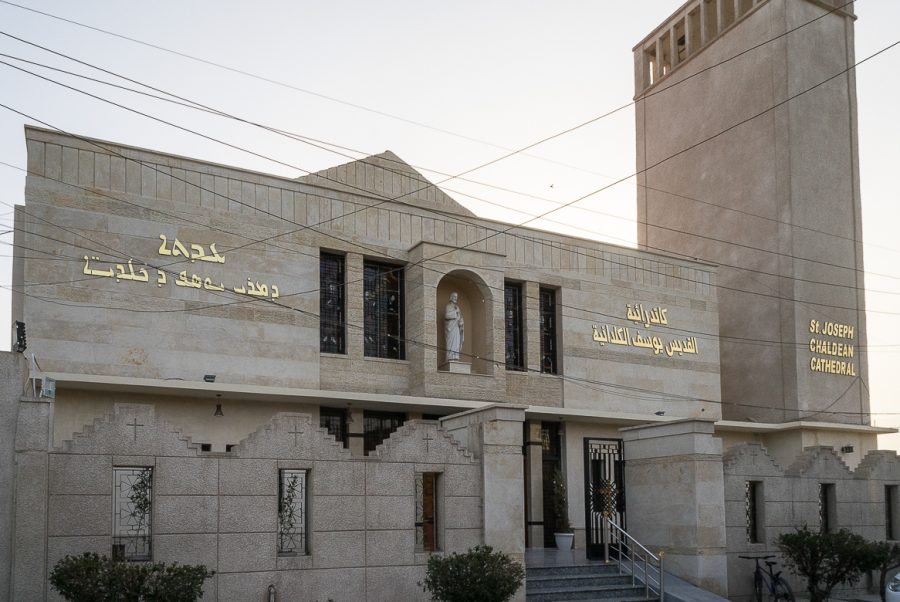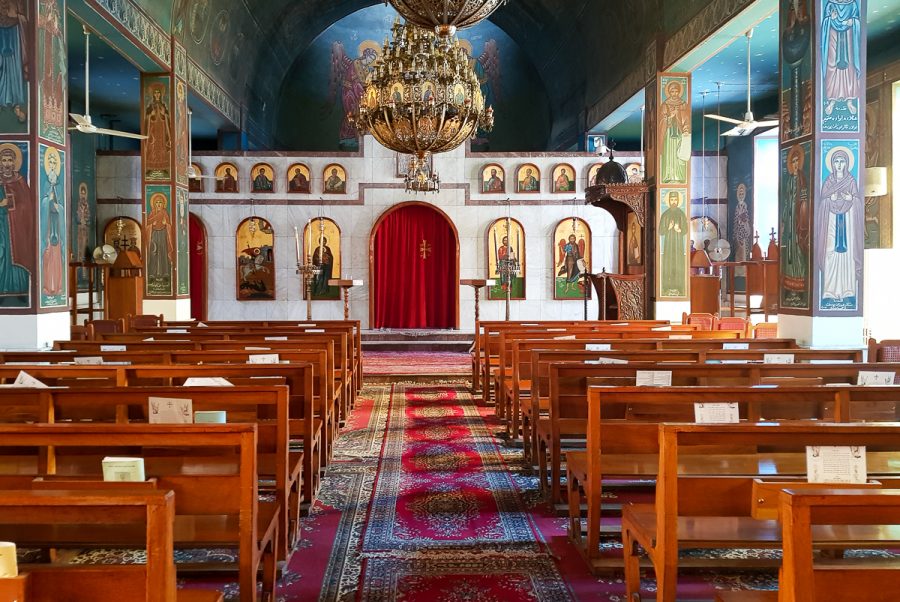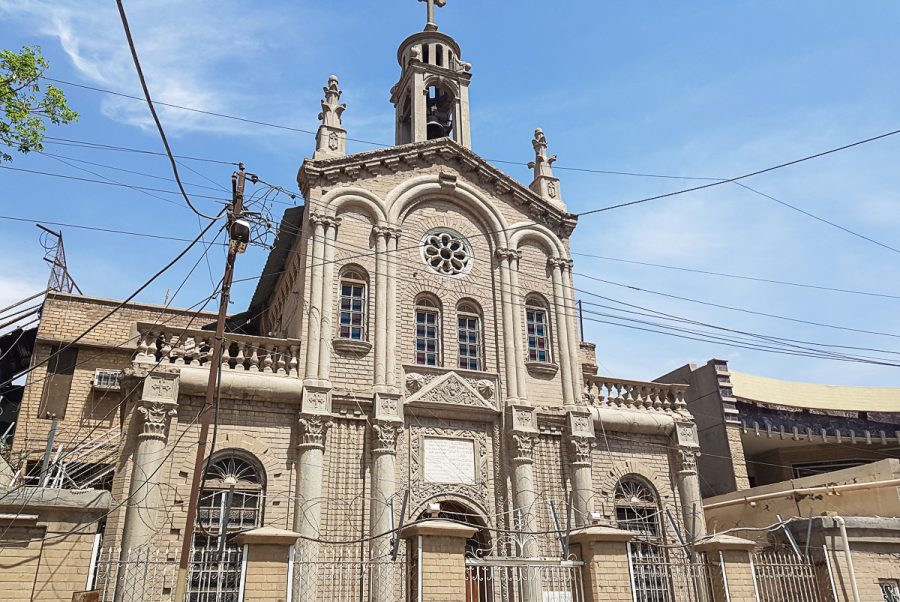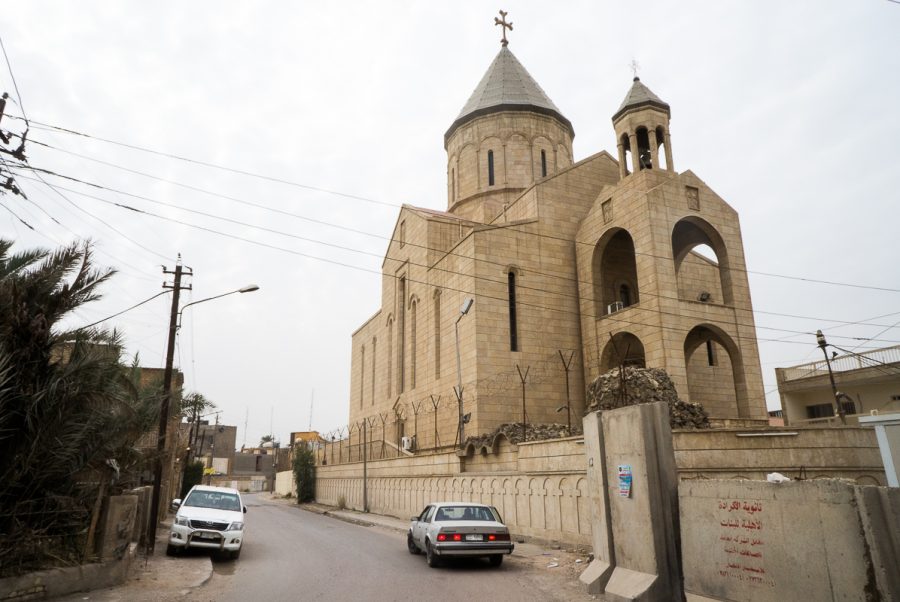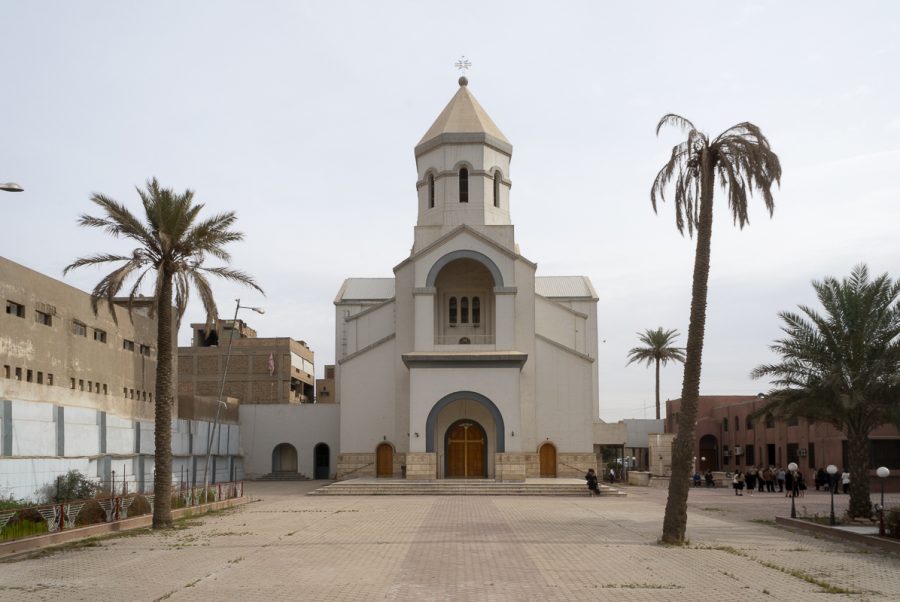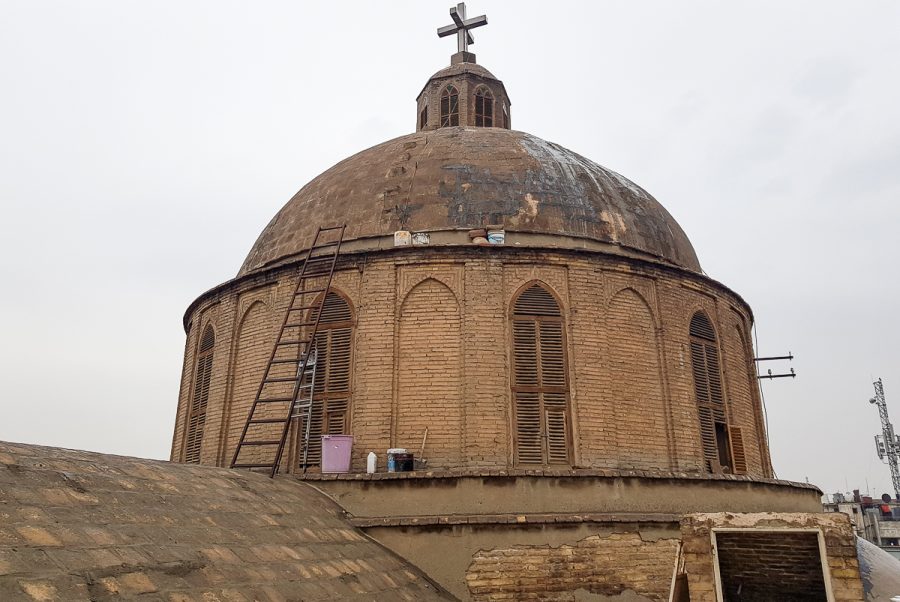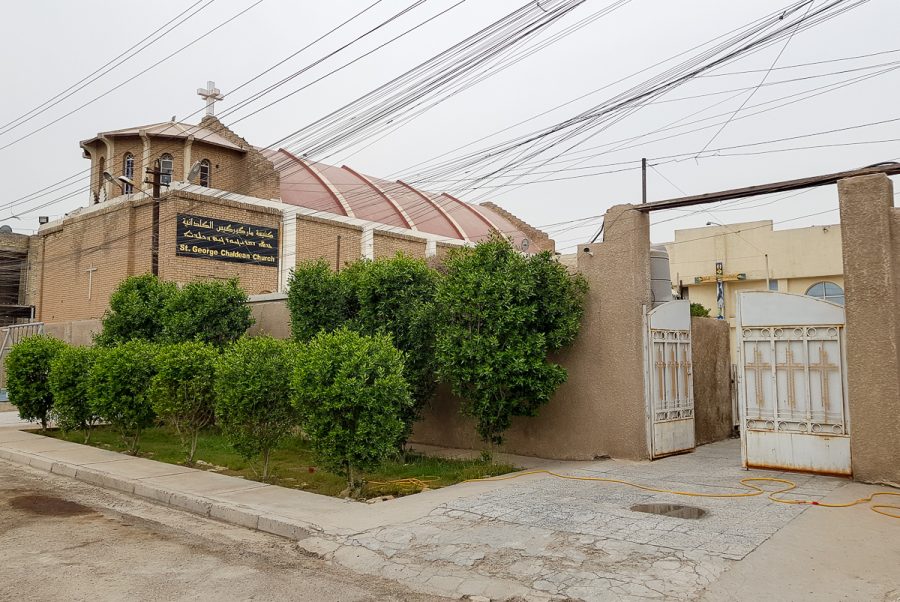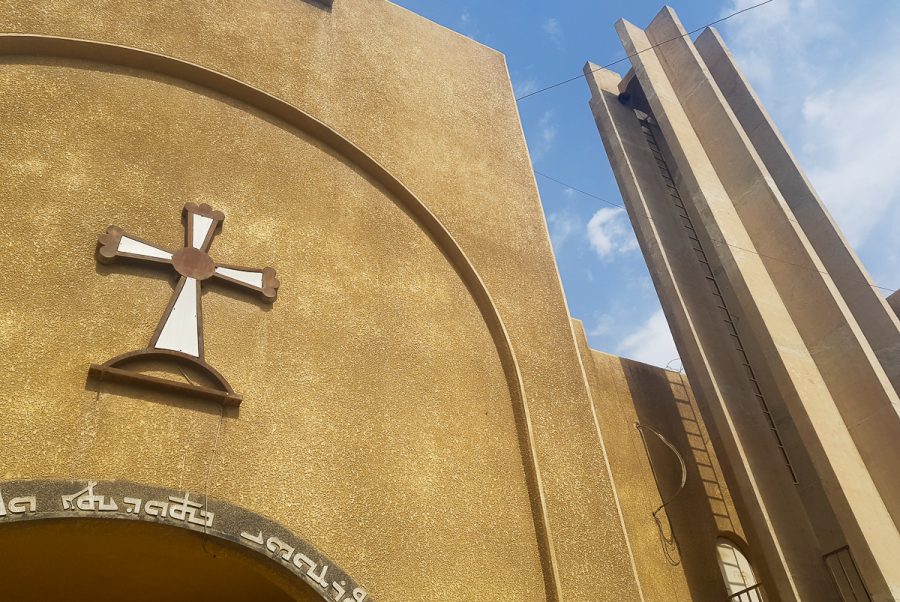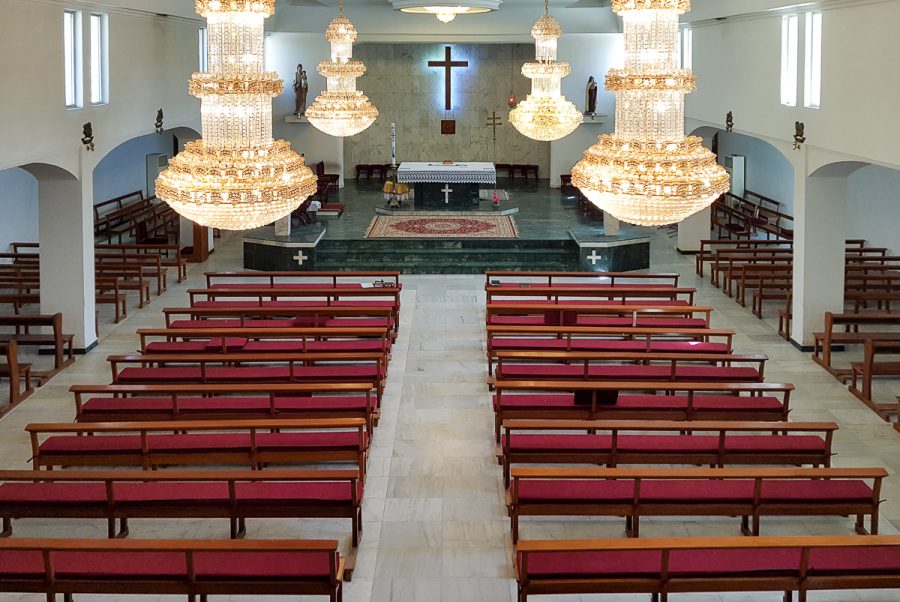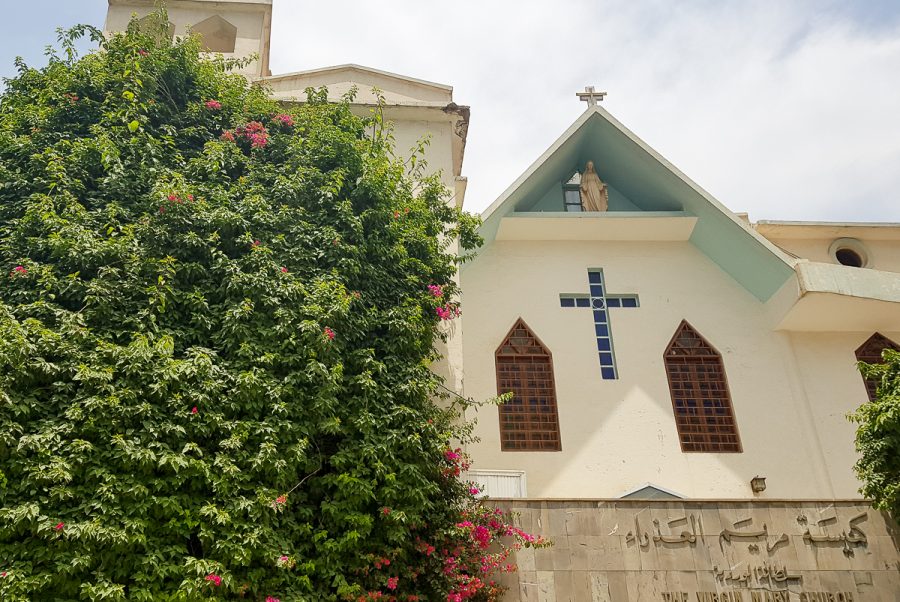The syriac-catholic church of our Lady of the Immaculate in Baghdad
The Syriac-Catholic Church of Our Lady of the Immaculate Conception, demolished at the end of 2018, is located at 33°20’18.33″N 44°23’44.42″E and 44 metres’ altitude, on the eastern bank of the Tigris, in the Chorjah / Aqued al Nassara district, one of the oldest districts in Baghdad, next to the Chaldean church Om al Ahzane.
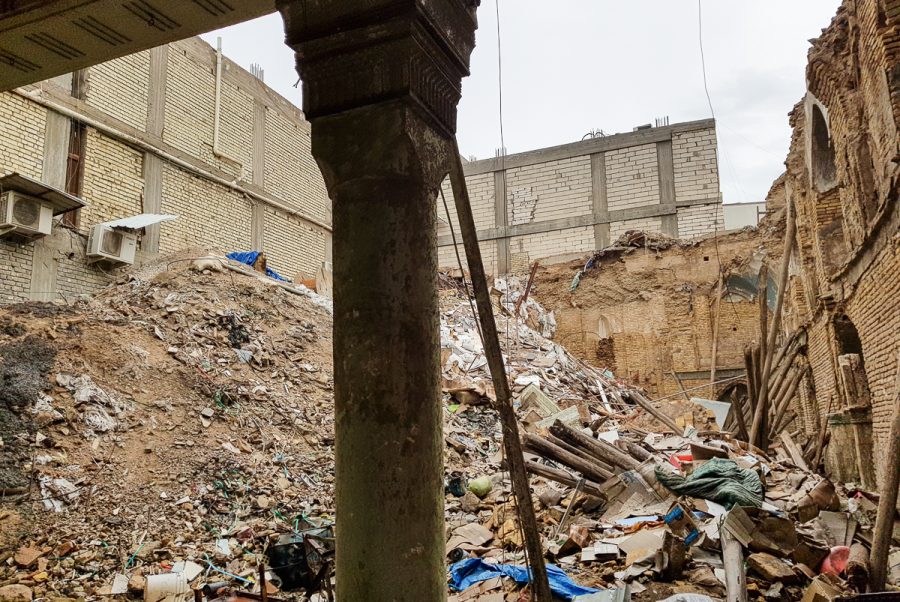
The first Syriac-Catholic church in Baghdad was founded in 1842. Due to its small size, several adjacent plots of land and terrace houses were purchased in order to build the new Our Lady of the Immaculate Conception church. The work started on 20th January 1862 and was completed on 6th December in the same year. The church was opened on 8th December 1862, the date of the feast of the Immaculate Conception.
Abandoned after the Syriac-Catholics left this old district for the modern district of Karrada, the church of Our Lady of the Immaculate Conception progressively fell into ruin. At the end of December 2018 it was demolished, 156 years after its inauguration. A shopping centre may well be built in its place!
| Pic : The Syriac-Catholic church of Our Lady of the Immaculate Conception in Baghdad, under demolition. April 2018 © Laith Basil Nalbandian / MESOPOTAMIA |
Location
The Syriac-Catholic Church of Our Lady of the Immaculate Conception is located at 33°20’18.33″N 44°23’44.42″E and 44 metres’ altitude, on the eastern bank of the Tigris, in the Chorjah / Aqued al Nassara district, one of the oldest districts in Baghdad, next to the Chaldean church Om al Ahzane.
Aqued al Nassara is one of the oldest districts in Baghdad, where thousands of Christian families of different denominations used to live. In order to reach this district, you have to pass through the streets occupied by a large souk whose stalls take up all the available space.
Fragments of history
A Syriac-Catholic presence in Baghdad was attested in the 19th century, but the Syriac-Catholic community really started at the beginning of the 20th century, after the massacre of Christian, Armenian, and Assyrian-Chaldean communities in the genocide by the Ottoman Empire in 1915-1917. In addition, numerous Syriac-Catholics settled in the north of Iraq, in the province of Nineveh and in modern-day Iraqi Kurdistan, left these rural areas and moved to Baghdad due to its growing urbanisation and economic development.
In 1842, the first Syriac-Catholic parish in Baghdad was created, in the ancient Christian district of Agd-al-Nasara.
The cathedral-church Sayidat al Najatte, built in 1968, was the scene of a terrible tragedy on 31st October 2010, when one of the worst terrorist attacks perpetrated against Christians in Iraq was carried out there. A group of 5 to 15 extremists[1] from the so-called Islamic State of Iraq massacred 47 people (children, women and men) and injured dozens of others. The mutilated bodies were left lying on the floor, the walls were peppered with bullet holes and traces from explosions. An inconceivable tragedy.[2]
This attack was a watershed event, the world suddenly became aware of how much Iraqi Christians were threatened, abused and persecuted by Islamic terrorist and mafia groups.
________
[1] The exact number of jihadists in the commando is not known. Some of the terrorists took advantage of the ensuing confusion to escape when the injured victims were evacuated.
[2] Monsignor Pios Cacha described what he went through in a 666-page book which he gifted to Pope Benedict XVI on 12th January 2012.
Demographic analysis
Before the October 31st 2010 attack, insecurity was already very high and growing. However, 5,000 families used to be regular attendees of the cathedral Sayidat-al-Najat, 7,000 families at Mar Benham and 2,000 at Mar Youssif church. In total, they represented around 14,000 Syriac-Catholic families in Baghdad[1]. Since the attack, the demographic loss has never ceased. In 2018, there were no more than 1,000 families in these three churches serving the Syriac-Catholic community in Baghdad. As long as the fear endures, so does this exile. The terrorist attack at Sayidat-al-Najat is a trauma that has not been overcome, and it is all the more appalling as such a tragedy was purely unthinkable.
_______
[1] Source Monsignor Pios Cacha
History of the construction of the Syriac-Catholic church of Our Lady of the Immaculate Conception in Baghdad
The first Syriac-Catholic church in Baghdad was founded in 1842. Due to its small size, several adjacent plots of land and terrace houses were purchased in order to build the new Our Lady of the Immaculate Conception church. The work started on 20th January 1862 and was completed on 6th December in the same year.
Consecrated by bishop Athanasios Rouffaïl Jerkhy, the first bishop of the Syriac-Catholic community in Baghdad, the church of Our Lady of the Immaculate Conception was opened on 8th December 1862, feast day of the Immaculate Conception.
Description and demolition of the church of Our Lady of the Immaculate Conception in Baghdad
Today it is impossible to describe the church of Our Lady of the Immaculate Conception, because at the end of December 2018 it was demolished.
In its glory days, this building made remarkable use of decorated terracotta bricks and muqarnas motifs, notably above the high altar and the small altars in the side aisles. The central door of the church, intricately engraved and made of wood, was made in India.
Abandoned after the Syriac-Catholics left this old district for the modern district of Karrada, the church of Our Lady of the Immaculate Conception progressively fell into ruin. The roof entirely collapsed leaving just the compromised walls behind. The plot of land on which the church was built has been sold. At the end of December 2018 the church was demolished, 156 years after its inauguration. A shopping centre may well be built in its place!
Monument's gallery
Monuments
Nearby
Help us preserve the monuments' memory
Family pictures, videos, records, share your documents to make the site live!
I contribute